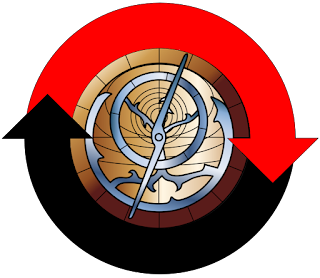 |
| Alorea's Greater Linnefarn & Dwarven Disputed Areas (874 CE) |
As a fragile truce eventually prevailed, the peers of other pantheons observed with growing consternation the arrival of newcomers from the vortex. The first to react was Istra. Circa 950 CE, she inspired Talikai adventurers who secretly honored her, to establish privately-owned settlements along the Dawn Wild’s far-eastern coast. For a time they escaped Nicarean scrutiny and oppression. To consolidate their holdings, Istra negotiated with the Gate Keeper for her share of newcomers, like other gods already had on the opposite side of the Dawn Wilds. Thus did a new people settle alongside the Talikai, seafarers to be sure and explorers of fortune who soon called their strange new realm the Costa Verde, all in the name of Istra.
1030 CE: Phrydian auguries deemed auspicious a foray into Nicarean territory. Peacefully, Bongorian traders and their families travelled to the Dawn Wilds, eventually outnumbering Nicareans and their newcomer allies all along the shores south of Traders’ Cove. They brought with them the cult of Os-Othiel and, like his nearby peers, he schemed for newcomers to bolster his followers’ ranks. He attracted a proud and ebullient people who enjoyed bullfights. Though puzzled at first, the Bongorians accepted them as they too honored Os-Othiel. It wouldn’t be until the 1200s for Phrydian half-elves to become prevalent in these parts. By then, the Bongorian colony would also be better known as the Costa Brava.
1060 CE: A mere thirty years later trouble spilled over from Nav-Gandar. Fleeing the Nicarean inquisition, wizardly household moved into Alorean lands. With the elven hold on this region somewhat tenuous, Gandarians easily spread along the coast down to the foothills of the Alvern Heights, bringing with them their strange cults. Annoyed, Delathien paid dearly for another share of newcomers to help his followers hold on to this region. These were industrious ones who introduced the elves to ale and kidney pie. They called their new capital Sterlingham and named other fine places, such as Bloodstone Castle and Bickersford.
In due time, Naghilas did the same, sending newcomers to help his Gandarian followers prevail farther south. Boisterous, stylish, and determined to enjoy the good things in life, these people were prompt to call their new capital Hauteville and its waterfront the Baie des Princes. Despite bewildering and sudden changes to their neighborhood, local elves remained in the area, determined to preserve their faiths in what became known as the province of Tourneuve.
To be continued.



